#python for coding
Text
"Python Data Types and Variables: The Foundation of Dynamic Programming"
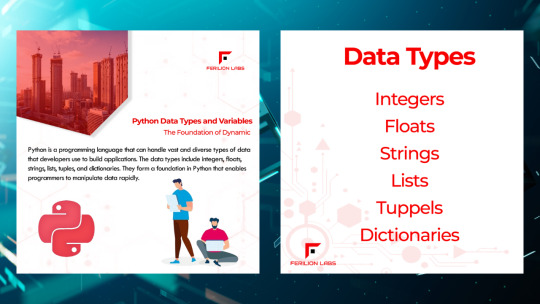
Introduction:
Python is a programming language that can handle vast and diverse types of data that developers use to build applications. The data types include integers, floats, strings, lists, tuples, and dictionaries. They form a foundation in Python that enables programmers to manipulate data rapidly. In this article, we explore each data type's definition, explore their significant applications, and learn about Python's variable assignment and manipulation flexibility.
Exploring the Data Types:
1. Integers:
Integers are data types that represent whole numbers. They have no decimal points or fractions. In Python, programmers can perform mathematical operations such as addition, subtraction, multiplication, and division with integers. The concept is valuable for mathematical calculations, financial computations, and counting. Additionally, Integers can handle large numbers with a range from -2^31 to 2^31-1.
2. Floats:
Floats are floating-point numbers that represent decimal numbers or exponentials. In Python, floats are useful for scientific calculations and financial computations. They can handle a wide range of decimal values, including very large or small numbers, and perform incredibly accurate calculations. Programmers can perform standard mathematical operations, such as addition, subtraction, multiplication, and division, on float data types.
3. Strings :
Strings are sequences of zero or more characters combined. These elements are specific references or text in Python inside single quotes, double quotes, or triple quotes depending on the string length. Strings are useful in applications like textual data manipulation, user interface input, or generating dynamic content. Programmers can use built-in Python functions and methods that can manipulate string functions, such as concatenation, searching, slicing, and formatting.
4. Lists:
Lists are collections of items that Python stores in order, following the concept of heterogeneity. Programmers can include data types, data sets, and arrays in lists. They can append, modify, or extend lists as needed. Programmers use lists in applications like sorting algorithms, searching, grouping related items, and iterating over specific elements.
5. Tuples:
Tuples in Python are similar to lists but with one main difference. Each data type is immutable or unchangeable once defined, thus creating order and organization in the data application. Programmers use tuple data types in scenarios where data integrity is essential or acting as keys in dictionaries.
6. Dictionaries:
Python stores dictionaries in key-value pairs enclosed within curly braces ({}). Each value in the dictionary has a specific unique key, making it easy and fast to retrieve data. Programmers use dictionaries in applications like mapping different values, configuration settings, or datasets.
Variable Assignment and Manipulation:
Python has flexible variable assignment using the equal (=) sign. Programmers can assign variables that hold different data types, making it easy to reference data and conduct operations specific to that variable. Programmers can manipulate variables and perform complex calculations, transform data, or manipulate strings using appropriate Python operations.
Conclusion:
Python is a versatile programming language with advanced data types and easy variable manipulation. The data types, such as integers, floats, strings, lists, tuples, and dictionaries, are the foundation of dynamic programming in Python applications. Programmers use these concepts to handle different types of data, perform calculations, manipulate strings, manage collections, or create mappings between different values. With the foundation of these concepts, developers can build efficient and innovative programs in Python that can handle various applications.
LEARN MORE ABOUT US
#software development classes#software development courses#courses software engineering#software course#software engineer classes#software training institute#program developer course#best software courses#artificial intelligence#course on software engineering#Python#python#python programming#python and programming#python the programming language#python course#python language course#python for coding#python training#python web development#python developer#python learning#learn python programming#python software#python machine learning
0 notes
Text
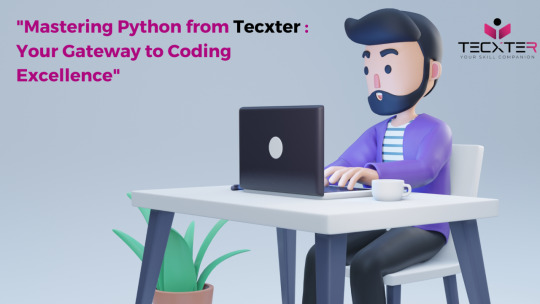
Mastering Python from Tecxter: Unlock Your Coding Potential & Embark on the Path to Excellence
"Mastering Python from Tecxter" is more than just a course; it's an investment in your future. Join us and unlock your coding potential to become a Python programming master! Visit our website to learn more and start your coding journey with Tecxter!
LEARN MORE ABOUT US
#Python#python programming#programming language in python#python language#python for coding#python computer coding#programming python code#Data Science#Web Development#Machine Learning#Artificial Intelligence#Automation#Programming Community#TechTrends#Python Innovation#CodingLife#Developer Community#Python Language#Tech Updates#Learn Python#Programming Languages
0 notes
Text

16K notes
·
View notes
Text
























misc coding stamps graphics
#carrd#carrd resources#carrd stuff#neocities resources#webcore#neocities#website#stamps#neocities stamps#2000s#old web graphics#web graphics#web resources#software#coding#javascript#c++#python#html css#rentry decor#rentry#rentry graphics#old web
996 notes
·
View notes
Text
So python is apparently unable to handle if-statement with more than 2996 elif’s, which is fair, however, it’s really limiting my implentation of an is_even function
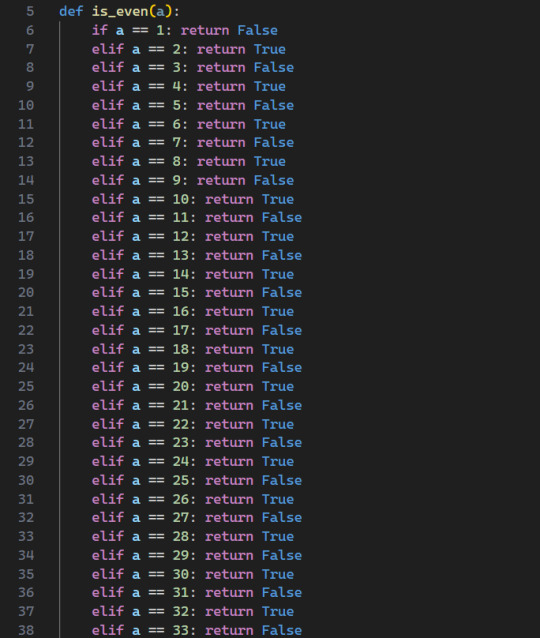
Any ideas on how I can work around this?
3K notes
·
View notes
Text
Essentials You Need to Become a Web Developer
HTML, CSS, and JavaScript Mastery
Text Editor/Integrated Development Environment (IDE): Popular choices include Visual Studio Code, Sublime Text.
Version Control/Git: Platforms like GitHub, GitLab, and Bitbucket allow you to track changes, collaborate with others, and contribute to open-source projects.
Responsive Web Design Skills: Learn CSS frameworks like Bootstrap or Flexbox and master media queries
Understanding of Web Browsers: Familiarize yourself with browser developer tools for debugging and testing your code.
Front-End Frameworks: for example : React, Angular, or Vue.js are powerful tools for building dynamic and interactive web applications.
Back-End Development Skills: Understanding server-side programming languages (e.g., Node.js, Python, Ruby , php) and databases (e.g., MySQL, MongoDB)
Web Hosting and Deployment Knowledge: Platforms like Heroku, Vercel , Netlify, or AWS can help simplify this process.
Basic DevOps and CI/CD Understanding
Soft Skills and Problem-Solving: Effective communication, teamwork, and problem-solving skills
Confidence in Yourself: Confidence is a powerful asset. Believe in your abilities, and don't be afraid to take on challenging projects. The more you trust yourself, the more you'll be able to tackle complex coding tasks and overcome obstacles with determination.
#code#codeblr#css#html#javascript#java development company#python#studyblr#progblr#programming#comp sci#web design#web developers#web development#website design#webdev#website#tech#html css#learn to code
1K notes
·
View notes
Text
I come across a great site to learn coding, I don’t see a lot of people talking about it tho. (There is an app too!)
This site has python 101 for free (and many another, tho course from 102 and up aren’t free)

Its has a cute design and great at explaining the small details that some teachers don’t explain ✨

There is also many exercises in each chapter of the lessons.
You can check more about it from there official site ✨
Happy coding you all 🫶🏻
#codeblr#python#coding#learn to code#programming#python programming#html#javascript#javafullstackdeveloper#learn sql#sql course#sqldeveloper#phpwebsitedevelopment#php programming
2K notes
·
View notes
Text



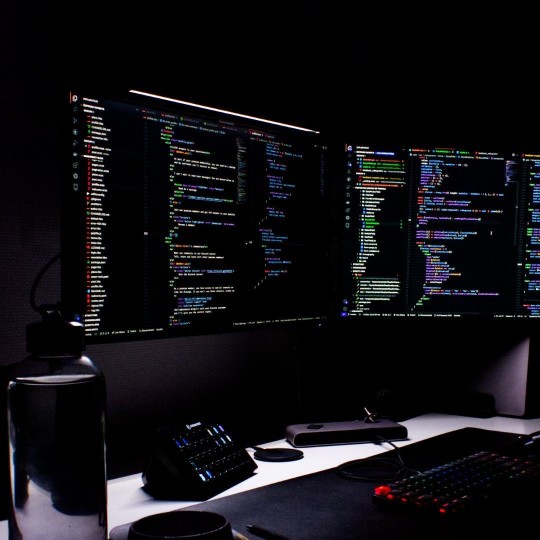


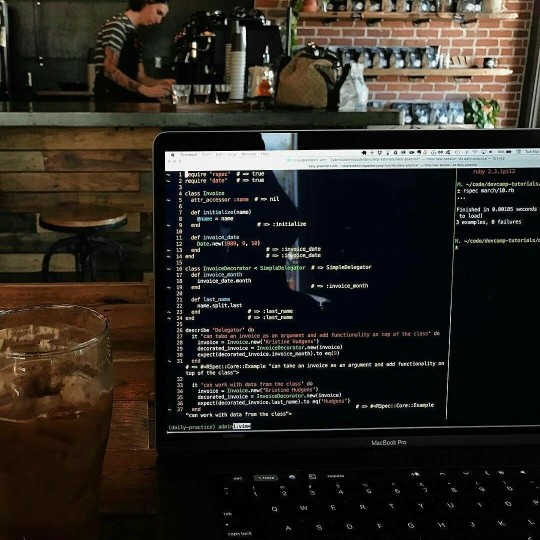

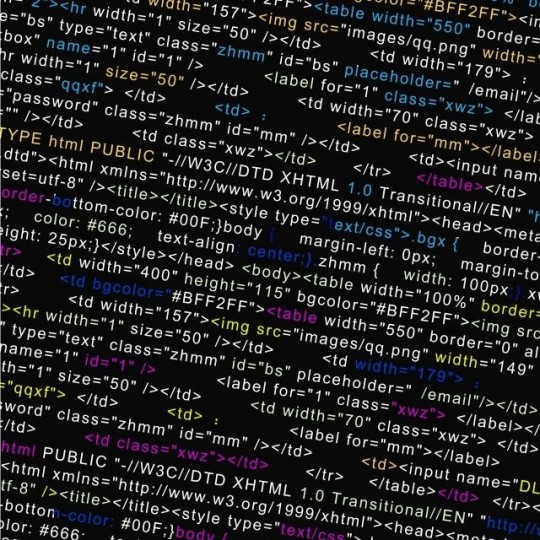
Programming as an Aesthetic.
#coding#programming#programmer#python#python programming#code#studyblr#study notes#study desk#studying#study aesthetic#studygram#studyspo#programming aesthetic#data science#computer science#javascript#c++ language#c language#machine learning
1K notes
·
View notes
Text
Coding resource!


exercism.org
A free website where you get specific problems to methodically learn small concepts of a programming language. Do 10 minutes to 1 hour every day, and then you will keep practicing every day, and you will be able to use the skills you learn in your real projects. They walk you through the problem all the way, and it's a super good way to learn!
#coding#programming#web development#resources#codeblr#progblr#learn to code#software development#python#javascript#js#c++#c#css#html#resource#data analytics#computer science#cs#compsci
2K notes
·
View notes
Text

#rowlet#welcome to the seventh generation. the things i do for you all. i just had to learn the structure of the code of collada files#so that i could stop making these bitches too shiny to see their eyes so that i could continue doing this#because i am a developer and not a 3d modeler#so it's easier for me to edit the code than it is for me to learn how to use fuckin blender#so i'm probably gonna write up a little script in python to Un-Shinify any models that i get to make it easier for me#but anyway! now that that's out of the way. this is probably one of my least favorite starters#just being honest. i like popplio a LOT and litten more than this at least#it's not that i dislike it‚ i just find that it's a little……… less. than the other two starters of this region#it's still cute and i like the sounds it makes. it is definitely a circle#and like that's awesome. but i like litten and popplio more :/ sorry to that one anon who hated all the water starters but also not sorry#they killed me like twenty billion times so i'm gonna like whatever water starters i want
232 notes
·
View notes
Note
hi!! do you have any free resources or textbooks for learning python? i’m doing my dissertation and i need a refresher before i start doing it properly. thanks!!
Hiya! 💗
Here you go:
Book
Python Objects and Classes
Roadmap.sh
Random Python Resources
Top 20 Python Projects for Beginners to Master the Language
Free Programming Books
Python Notes and Resources by @trialn1error
Python Official Roadmap
Python Project List
Python 3 Cheat Sheet
Python Cheatsheet for Beginners
These are the ones' I've shared on my blog over the years! Hope their helpful! 🥰👍🏾💗
#my asks#resources#python resources#codeblr#coding#progblr#programming#studying#studyblr#learn to code#comp sci#tech#programmer
290 notes
·
View notes
Text
Unleashing the Power of Control Flow: Exploring Conditional Statements, Loops, Functions, and Modules in Python

Python, being a versatile programming language, provides several control flow mechanisms that allow developers to create complex and dynamic programs. In this article, we will explore conditional statements, loops, and other control flow mechanisms in Python programming.
Conditional Statements: If, Elif, or Else
Conditional statements are used to execute different blocks of code based on certain conditions. In Python, we have three types of conditional statements: if, Elif, and else.
The "if" statement is the most basic type of conditional statement. It allows us to execute a certain block of code only if a specified condition is true. For example:
'''python
if condition:
# code block executed if the condition is true
'''
The 'elif' statement is used to check for additional conditions if the previous conditions are not met. It stands for "else if". Multiple 'elif' statements can be chained together to check for multiple conditions. For example:
'''python
if condition1:
# code block executed if condition 1 is true
elif condition2:
# code block executed if condition2 is true
else:
# code block executed if none of the conditions above are true
'''
Loops: For and While Loops
Loops are used to repeat a certain block of code multiple times until a specified condition is met. In Python, we have two types of loops: for and while loops.
The "for" loop is used to iterate over a sequence (such as a list, tuple, or string) or other iterable objects. It allows us to perform a set of operations on each item in the sequence. For example:
'''python
For items in sequence:
#code block executed for each item in the sequence
'''
The "while" loop is used to repeatedly execute a block of code as long as a certain condition is true. It is useful when we do not know the number of iterations in advance. For example:
'''python
while condition:
# code block executed as long as the condition is true
'''
Control Flow Mechanisms
Python provides additional control flow mechanisms to modify the flow of execution within loops and conditional statements.
The "break" statement is used to exit the current loop prematurely. When encountered, it immediately terminates the loop and resumes execution at the next statement after the loop. This can be useful when we want to stop the loop based on a certain condition.
The "continue" statement is used to skip the rest of the current iteration of a loop and move to the next iteration. It allows us to skip certain iterations based on a certain condition, without exiting the entire loop.
Functions and Modules in Python
Functions and modules are powerful tools in Python for organizing and reusing code.
Functions are blocks of reusable code that perform a specific task. They allow us to write modular and reusable code, improving code readability and maintainability. Functions are defined using the "def" keyword, followed by the function name and any required parameters. For example:
'''python
def function_name(parameter1, parameter2):
#code block defining the function's behavior
# perform operations using the parameters
'''
Modules, on the other hand, are files containing Python code that can be imported and used in other programs. They enable code organization by grouping related functions and classes. We can create our modules or make use of built-in modules provided by Python. Modules are imported using the 'import' keyword. For example:
'''python
import module_name
# Access functions and variables from the module
module_name.function_name()
'''
We have explored control flow mechanisms in Python, including conditional statements (if, elif, else), loops (for and while loops), as well as functions and modules. These concepts are fundamental to writing efficient and structured code in Python. By understanding and applying these control flow mechanisms, you can create dynamic and reusable programs with ease.
LERAN MORE ABOUT US
#software course#software development classes#software development courses#courses software engineering#software training institute#program developer course#course on software engineering#software engineer classes#best software courses#artificial intelligence#Python#python#python programming#python and programming#python the programming language#python course#python language course#python for coding#python training#python web development#python developer#python learning#learn python programming#python software#python machine learning
0 notes
Text
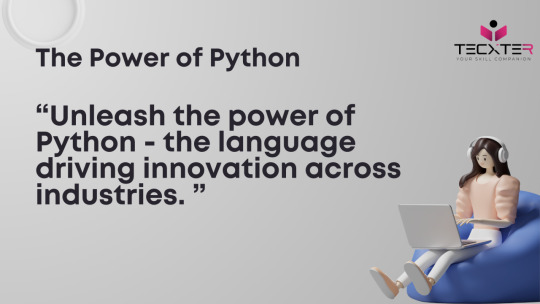
Unleash the Power of Python from Tecxter - The Language Driving Innovation Across Industries
Python, the versatile programming language, has become the driving force behind innovation in various industries. Its simplicity, readability, and vast library support make it a preferred choice for developers worldwide. Tecxter, a pioneer in Python innovation, has taken the lead in leveraging Python to create cutting-edge solutions that transcend industry boundaries.
LEARN MORE ABOUT US
#Python#python programming#programming language in python#python language#python for coding#python computer coding#programming python code#Data Science#Web Development#Machine Learning#Artificial Intelligence#Automation#Programming Community#TechTrends#Python Innovation#CodingLife#Developer Community#Python Language#Tech Updates#Learn Python#Programming Languages
0 notes
Text

#programmer humor#programming#geek#nerd#programmer#computer#python#laptop#c#meme#pc#computer science#java#developer#software developers#full stack web development#code#cs#javascript#c++#software engineer#software development#dev#web development
1K notes
·
View notes
Text

I'm currently learning React and I'm taking a 13-hour course. I can't keep this website to myself because it's truly amazing. It's perfect, it's free, and there are other courses out there with much less interaction and smoothness that make you pay a lot.
The website I'm talking about is Scrimba. I highly recommend it for anyone starting their front-end journey. I'm confident that no one will disagree with me on this.
Have a great day! <3
#codeblr#code#css#html#javascript#java development company#python#studyblr#progblr#programming#comp sci#web design#web developers#web development#website design#webdev#website#tech#html css#learn to code
335 notes
·
View notes
